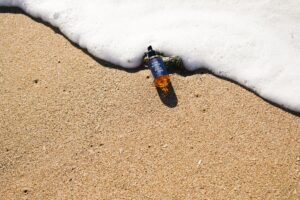The odors of wastewater treatment plants are usually measured through dynamic olfactometry, where a human panel smells and analyzes air samples collected at the treatment plants. Although considered the reference method, it is a expensive, slow, and infrequent process, making it difficult for operators to quickly respond to potential issues and locate the source of the smell.
Now researchers from the Institute of Bioengineering of Catalonia (IBEC) have designed a portable electronic nose (e-nose) that, mounted on a drone, acts like a human in quantifying odorous emissions in these treatment plants. It weighs 1.3 kg and sucks air through a very thin ten-meter tube to take samples in areas not disturbed by the drone’s rotors. The details are published in the journal iScience.
“This electronic nose attached to a drone consists of an array of chemical sensors plus a data analysis system, based on machine learning, that predicts the intensity of the odor as a human panel would,” explains Santiago Marco from IBEC, the study’s lead author.
The e-nose is trained to smell chemicals specific to wastewater such as hydrogen sulfide, ammonia, and sulfur dioxide, which respectively smell like rotten eggs, urine, and burnt matches. It is also equipped with a carbon dioxide sensor as an indicator of bacterial activity.
Then, thanks to the drone’s mobility and the artificial intelligence algorithm, the team has been able to estimate the intensity of odors at different points in the plant, mapping their temporal and spatial concentration in an odor map of the plant, and, for the first time, anticipate the intensity of the odor based on measurements.
The ultimate goal of this technology is to help operators of wastewater treatment plants minimize the impact of bad smells on the neighborhood. “Not only do we try to quantify specific or individual components of the emission, but also to predict the intensity of odors perceived by humans,” emphasizes María Deseada Esclapez, a researcher from Depuración de Aguas del Mediterráneo, the company that operates the Molina de Segura (Murcia) plant where the system has been tested.
“We are very happy with the results, but we need more validation and make the device more robust for real operation in the plant,” acknowledges Marco, who, along with the other researchers, plans to optimize it against changes in temperature, humidity, and other environmental variables that affect the accuracy of the e-nose.
“The ultimate goal of this technology is to help operators of wastewater treatment plants minimize the impact of bad smells on the neighborhood,” he concludes, “although it can also have implications in other facilities such as landfills, composting plants, or even large cattle or pig farms, known for producing all kinds of bad smells.”
Source: MiMub in Spanish












